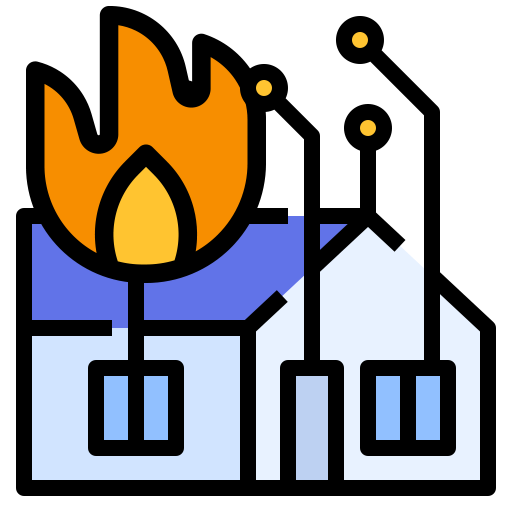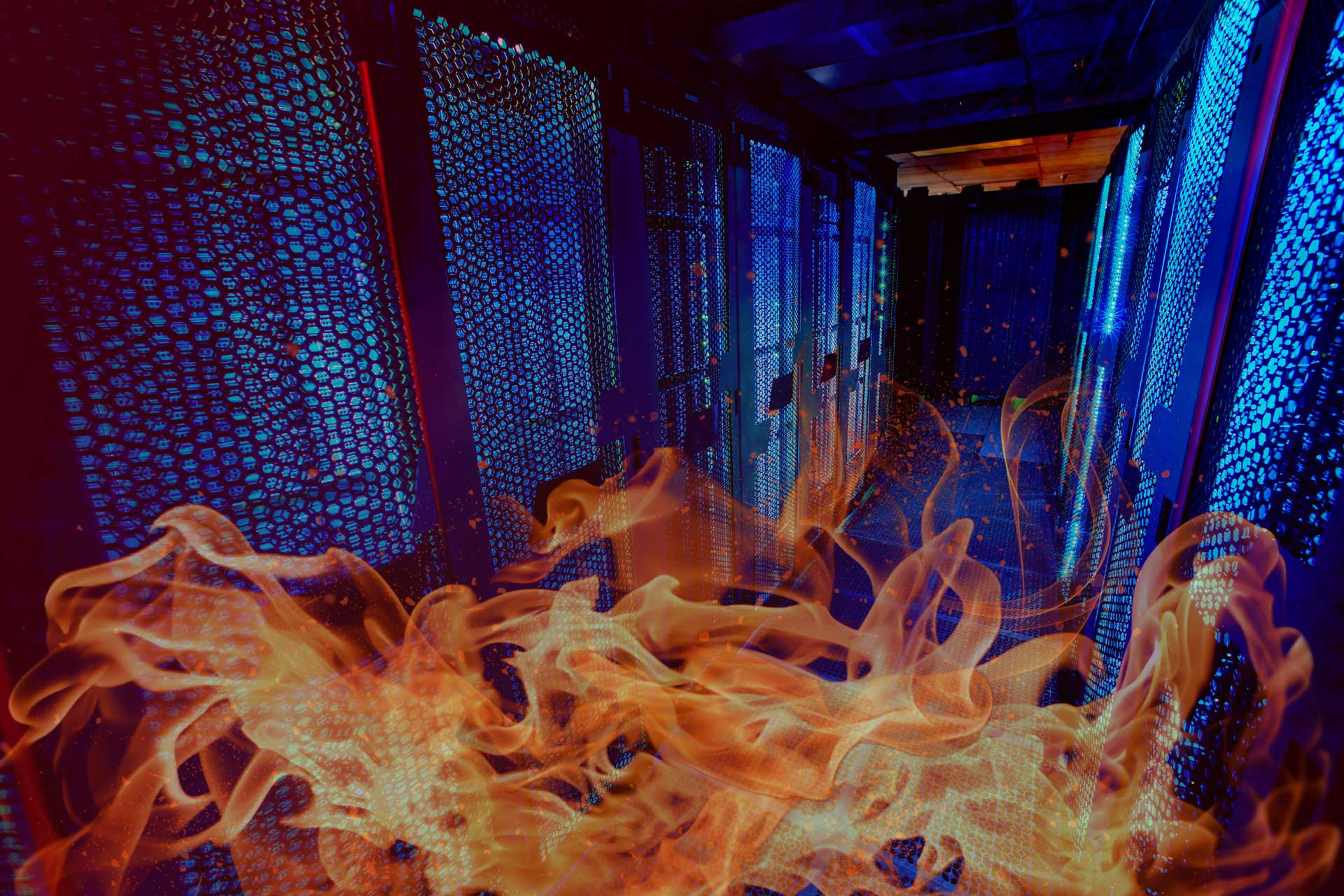A fire sprinkler system is a system of sprinklers that release water to control and extinguish fires. This system is activated by heat or smoke (or both). For many types of fires, water is an effective or the most effective fire suppression agent.
Although fire sprinklers are the most commonly utilized form of fire protection, there are some instances where fire sprinklers will not be effective in putting out a fire or where they will cause irreparable damage to property.
For example, in a data center, water would damage servers and equipment. In this case, a fire suppression system is installed.

Fire Suppression Systems
Fire suppression systems are similar to fire sprinkler systems except they do not use water to put out a fire. Instead, fire suppression systems often use chemical, gaseous, or foam agents to extinguish a fire.

Benefits of Fire Suppression
Fire suppression systems are used in environments where valuable equipment and unique assets (critical facilities, museums, art galleries, archives, etc.) are present. These systems respond rapidly and will extinguish a fire while causing minimal damage to valuable assets.
Clean agent fire suppression systems use environmentally friendly chemical reagents to extinguish fires in sensitive spaces like data centers. The clean-up is minimal, water-free, and safe for the environment.

Clean Agent Suppression Benefits
Additional benefits that clean agent suppression systems have over traditional water sprinklers include:
a) Fast-acting suppression
Clean agent suppression systems are dispersed and reach required concentration levels within as little as 10 seconds, snuffing out a fire before it results in catastrophic damage. They are designed specifically to extinguish fires, unlike traditional sprinklers which are designed to contain the fire until fire safety personnel can arrive.
b) Minimal cleanup and residue
Ruined electronics, soggy carpet and damaged furniture are all common staples of a triggered sprinkler system. Today’s chemical and gaseous fire suppression solutions result in little to no cleanup, allowing operations to quickly return to normal.
c) People-safe
Clean agents are safe for people and are approved by the US Environmental Protection Agency for us in normally occupied spaces.
d) Customisable to your needs
Whether your organization requires the “greenest,” the most cost-effective or the most globally accepted fire suppression solutions available, clean agent suppression systems can be highly customized to meet these needs.
Traditional sprinkler systems try to keep the building from being a total loss or to keep it from spreading. Clean agent fire suppression systems try to catch those fires a lot sooner so that less damage can be done.
This is why today’s special hazard fire suppression systems typically consist of a detection and control package that picks up a fire in the very earliest stages. That fire could be the size of a candle flame or the first by-product of combustion from insulation starting to melt on a conductor.
Therefore, it is important to obtain a fire-suppressing solution which is designed to extinguish fire hazards as quickly as possible, minimizing fire damage, smoke damage and even water damage to confidently protect your critical assets, and most importantly, the people within your organization.





